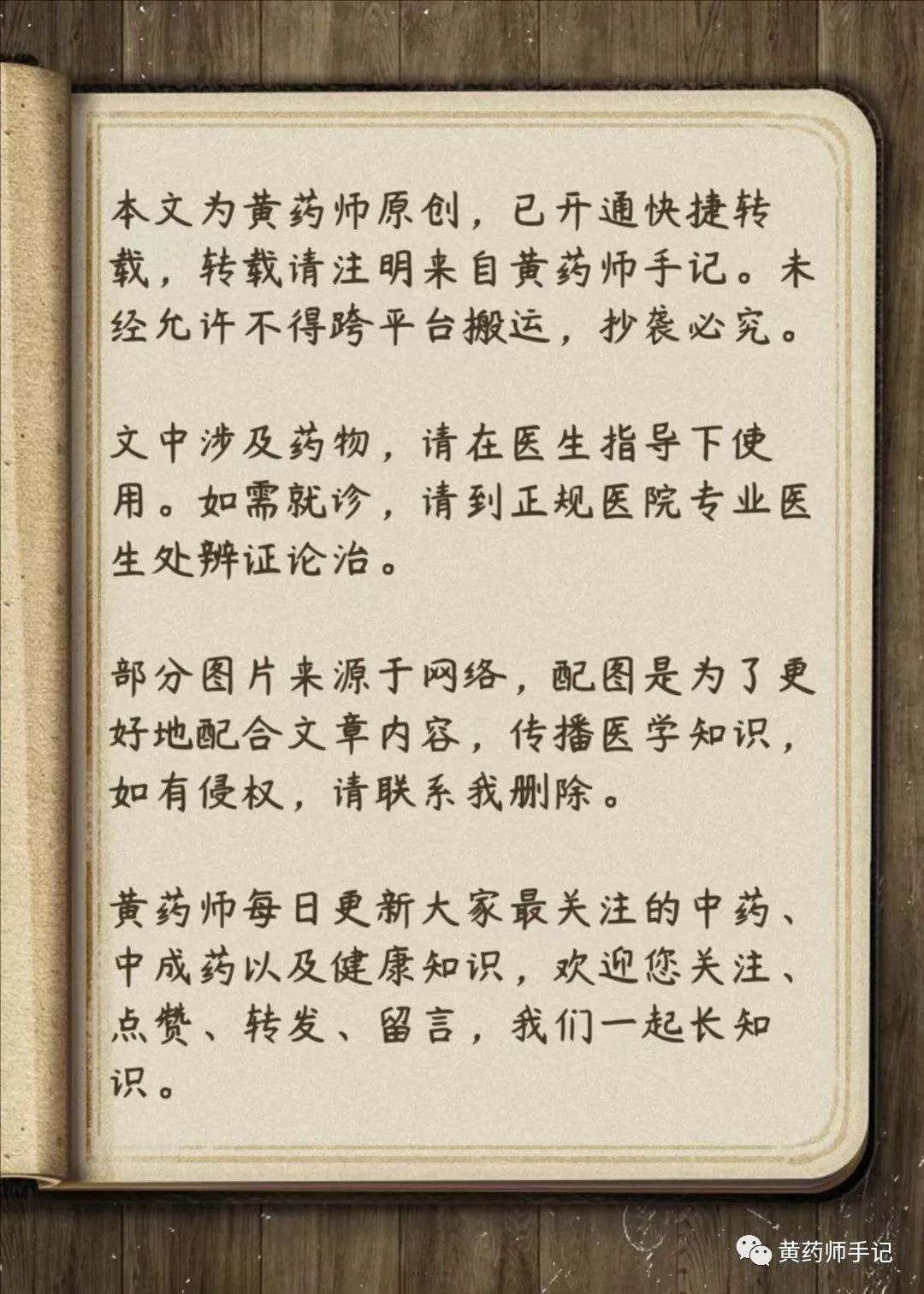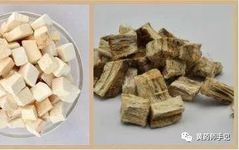Many Chinese herbs can be easily confused just by their names, and even some experienced doctors may not fully understand them. Today, Master Huang will discuss those commonly confused Chinese herbs and see if you have made similar mistakes.
1. Gan Jiang (Dried Ginger) and Sheng Jiang (Fresh Ginger)
Many people mistakenly believe that Gan Jiang is simply sun-dried Sheng Jiang, and many TCM practitioners also get this wrong.
In fact, Gan Jiang is not sun-dried fresh ginger; it is made from mature ginger (Lao Jiang).
Sheng Jiang is planted in the ground, and many new ginger shoots (Zi Jiang) will grow beside it, making the original plant become Lao Jiang, which is very old and very spicy.
The cultivation processes of the two are also different.
Sheng Jiang requires frequent earthing up during cultivation, so it grows quickly, with long and tender rhizomes. However, its internal accumulation is insufficient, and when dried, it is quite light.
Gan Jiang is not earthed up; its rhizome is exposed to the soil surface, allowing it to continuously accumulate internally, resulting in a heavy texture when dried.
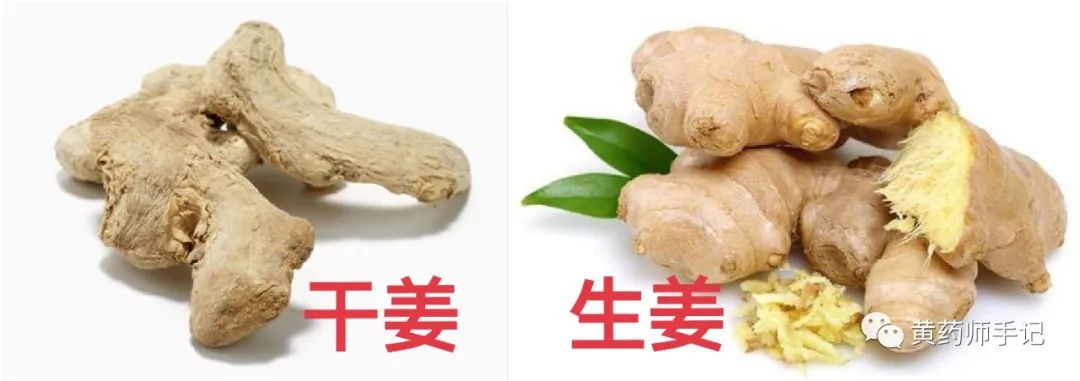
Gan Jiang has a very strong warming property, much stronger than Sheng Jiang. There is a saying, “Old ginger is spicier.” This old ginger refers to Gan Jiang, as it has accumulated more internally. It can warm the middle and disperse cold, often paired with Fu Zi (Aconite) to revive yang and rescue from reversal. There is a saying, “Without Gan Jiang, Fu Zi cannot generate heat,” which shows its warming property; this is not something that can be achieved by simply sun-drying the Sheng Jiang we use in cooking.
While Sheng Jiang can stop vomiting and disperse wind-cold, it is more commonly used for exterior syndromes. Gan Jiang, on the other hand, is more often used for interior syndromes and does not have a significant effect on stopping vomiting.
2. Rou Gui (Cinnamon) and Gui Pi (Cassia)
Gui Pi and Rou Gui are often confused due to their similar appearance and effects. Many people think they are using Rou Gui when adding spices. However, Rou Gui is more commonly used in medicine, while the spice used in food is generally Gui Pi.
From a botanical perspective, although both belong to the Lauraceae family, Rou Gui is the bark of the Cinnamomum verum tree, while Gui Pi is the bark of various species such as Cinnamomum cassia, Cinnamomum burmannii, and others.
In terms of appearance, while they look similar, there are still differences—Rou Gui is thicker, while Gui Pi is thinner.
Rou Gui is 0.2 to 0.8 cm thick, while Gui Pi is 0.1 to 0.2 cm thick. Rou Gui has a gray-brown surface and is somewhat rough; Gui Pi has a black-brown to dark brown surface, which is darker than Rou Gui.

The most important point is that Rou Gui has stronger warming properties and medicinal effects than Gui Pi. Rou Gui can tonify fire and assist yang, return fire to the source, disperse cold and relieve pain, and invigorate blood circulation. It can be used for impotence, cold uterus, cold pain in the lower back and knees, kidney deficiency with wheezing, yang deficiency dizziness, red eyes, sore throat (due to deficiency fire rising), cold pain in the abdomen, and severe cold-related vomiting and diarrhea.
Gui Pi has very weak effects in comparison. However, Gui Pi can warm the spleen and stomach, making it suitable for cooking and soups.
If Gui Pi is mistakenly taken for Rou Gui, the intended treatment may be ineffective;
If Rou Gui is mistakenly taken for Gui Pi, the medicinal effects will be too strong, leading to more side effects.
3. Ge Gen (Kudzu Root), Ye Ge (Wild Kudzu), and Fen Ge (Powdered Kudzu)
Ge Gen mainly has two varieties.
In modern usage, the commonly used Ge Gen is a white, low-fiber, and powdery variety, referred to as Fen Ge.
The other variety is gray-yellow, high-fiber, and less powdery, known as Ye Ge.
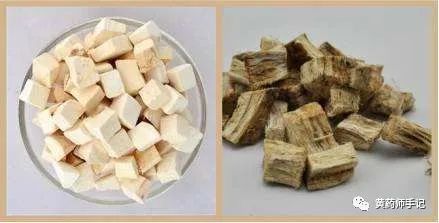
Left: Fen Ge; Right: Ye Ge
Some believe that Fen Ge is superior to Ye Ge, but this is not the case. Fen Ge is of better quality and is often used as food, but its medicinal effects are somewhat inferior, as recorded in the “Bencao Jing Jizhu.”
Modern research also indicates that the effective components in Ye Ge are higher than those in Fen Ge.
Ge Gen can release the exterior and reduce fever, especially in cases of warm diseases and wind-heat colds, particularly when there is stiffness and pain in the neck and shoulders (stiff neck). Ye Ge is more effective than Fen Ge in these situations.
Therefore, clinically, one should not emphasize the powdery nature of “Fen Ge” for medicinal use.
4. Dan Zhu Ye (Lophatherum Leaf) and Zhu Ye (Bamboo Leaf)
Dan Zhu Ye used in TCM is categorized by the Ming Dynasty.
Before the Ming Dynasty, the Dan Zhu Ye recorded in the “Bencao Gangmu” referred to the leaves of Dan Zhu (a type of bamboo), which is now known as Zhu Ye.
After the Ming Dynasty and into modern times, the Dan Zhu Ye used is the stem and leaves of Dan Zhu (not bamboo), known as Dan Zhu Ye.
Dan Zhu Ye is also called Mai Dong (Ophiopogon japonicus), but it only grows to a height of a few dozen centimeters, which is completely different from the several meters tall bamboo.
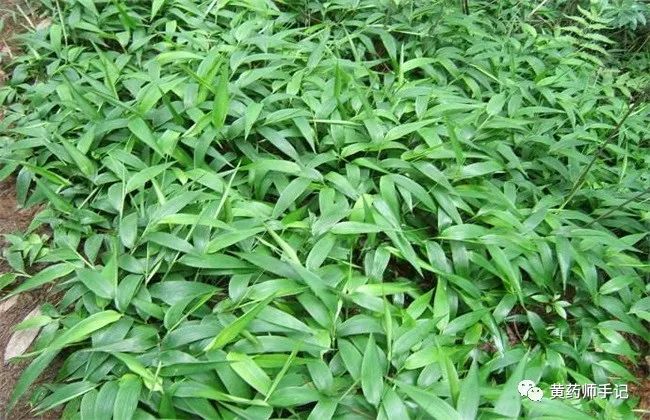
Dan Zhu Ye
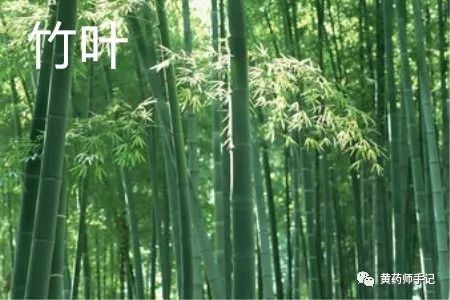
Zhu Ye
Although Dan Zhu Ye and Zhu Ye have different origins, their effects are similar; both can drain heart fire, clear stomach heat, and promote urination.
Zhu Ye has a slightly stronger effect in draining heart fire and clearing stomach heat;
Dan Zhu Ye has a slightly stronger effect in clearing heat and promoting urination.
In modern times, due to the lack of profit from Zhu Ye, the market has gradually replaced Zhu Ye with Dan Zhu Ye. If a doctor prescribes “Zhu Ye,” many pharmacies will provide “Dan Zhu Ye.” However, some traditional doctors still choose to use Zhu Ye.
5. Bai Fu Pian (White Aconite Slice) and Bai Fu Zi (White Aconite)
Bai Fu Pian and Bai Fu Zi differ by only one character, but they are two different Chinese herbs with no relation; do not confuse them.Both herbs are toxic; when used correctly, they can treat diseases, but if used incorrectly, they can easily cause poisoning.
Bai Fu Pian is a processed product of Fu Zi, which is the tuber of the Aconitum carmichaelii plant, a very hot Chinese herb. (Fu Zi link: it warms the body’s yang energy, is very hot and toxic, and is often used for acute myocardial infarction, angina attacks, and yang deficiency with cold reversal.)
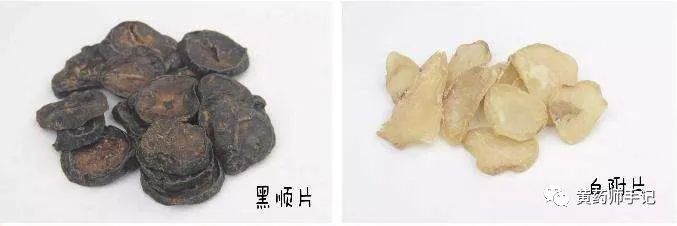
Right: Bai Fu Pian
Bai Fu Zi is also known as Yu Bai Fu, which is the tuber of the Arisaema heterophyllum plant. Historical texts record it as the tuber of the Aconitum carmichaelii plant, referred to as Guan Bai Fu.
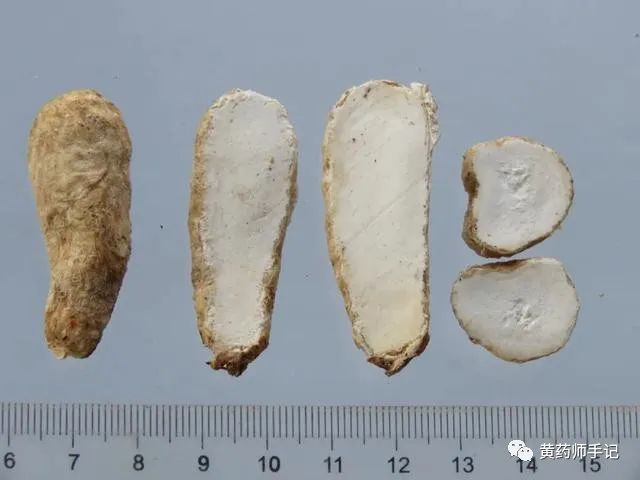
Bai Fu Zi can dry dampness and transform phlegm, dispel wind and stop spasms, and can be used for headaches, with completely different effects from Fu Zi.
One commonly used formula for facial paralysis is Qian Zheng San, which includes Bai Fu Zi and is used for facial paralysis and facial droop caused by stroke.
Master Huang’s Tips
All medicines have some toxicity, especially potent herbs like Fu Zi and Bai Fu Zi. If used correctly and for the right conditions, they can effectively treat diseases without toxic side effects. If used incorrectly, they not only fail to treat the disease but may also cause poisoning.

